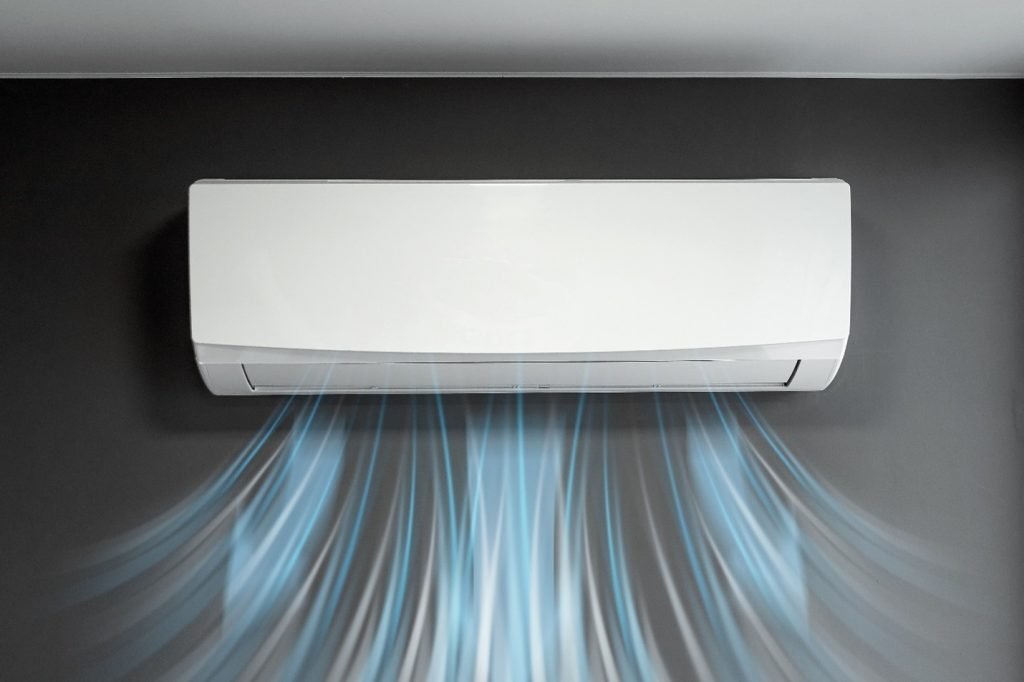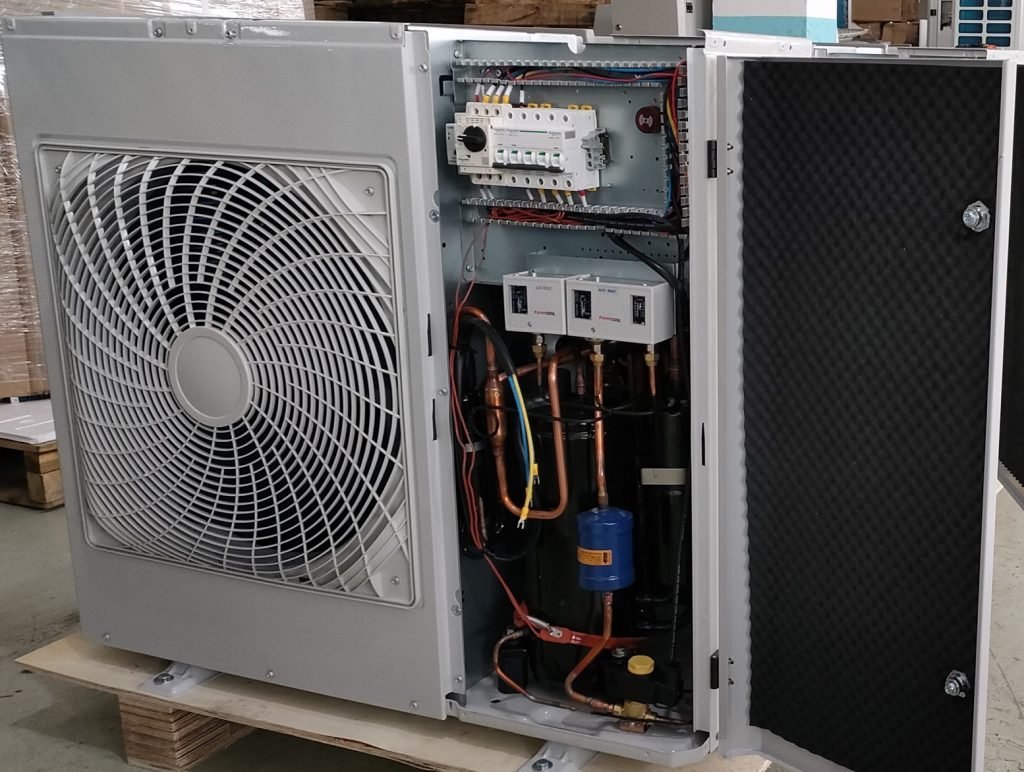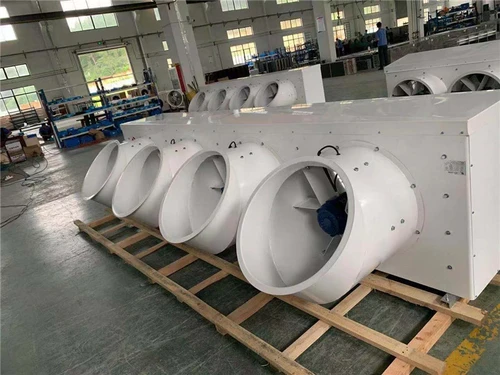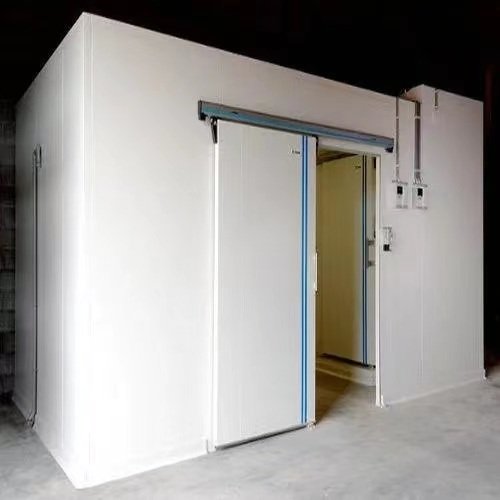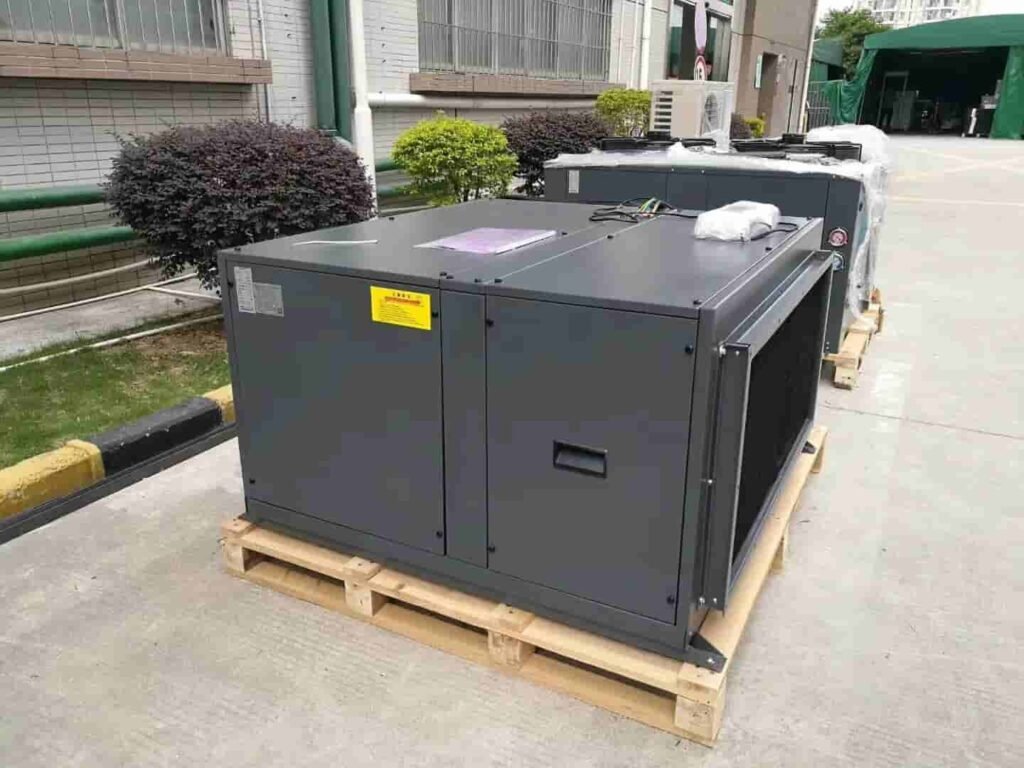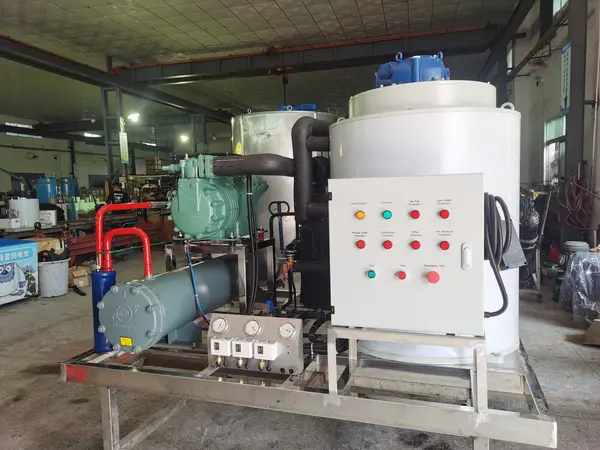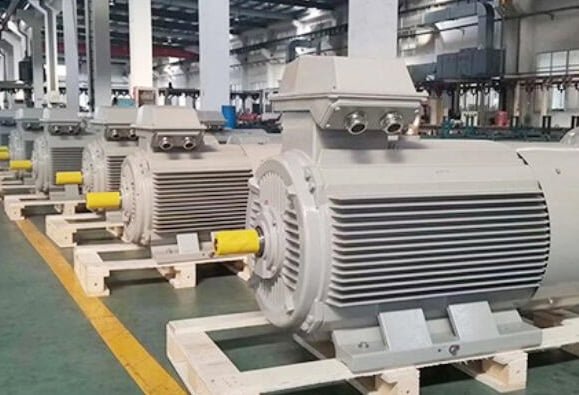Что такое изоляция медной трубы
Изоляция медной трубы относится к процессу обертывания теплоизоляционных материалов вокруг медных труб, чтобы минимизировать потерю тепла или усиление. Это важно для поддержания комнатной температуры, Повышение энергоэффективности, и защита труб от повреждения окружающей среды. Это особенно актуально как для жилых, так и для коммерческих систем сантехники, особенно в отоплении, охлаждение, и приложения для распределения воды.
Почему это важно
Изоляционные медные трубы могут снизить затраты на отопление за счет снижения потери тепла, защитить от повреждения трубы от замораживания, и продлить срок службы трубы, предотвращая коррозию. Например, Исследования показывают, что изолирующие трубы горячей воды могут сэкономить на 5% На счетах за нагревание воды, позволяя более низким настройкам термостата (Проект сбережений: Изоляция труб горячей воды). Однако, в хорошо изолированных пространствах или коротких трубных пробегах, Преимущества могут быть минимальными, и ненадлежащая установка может задержать влажность, рискованная коррозия.
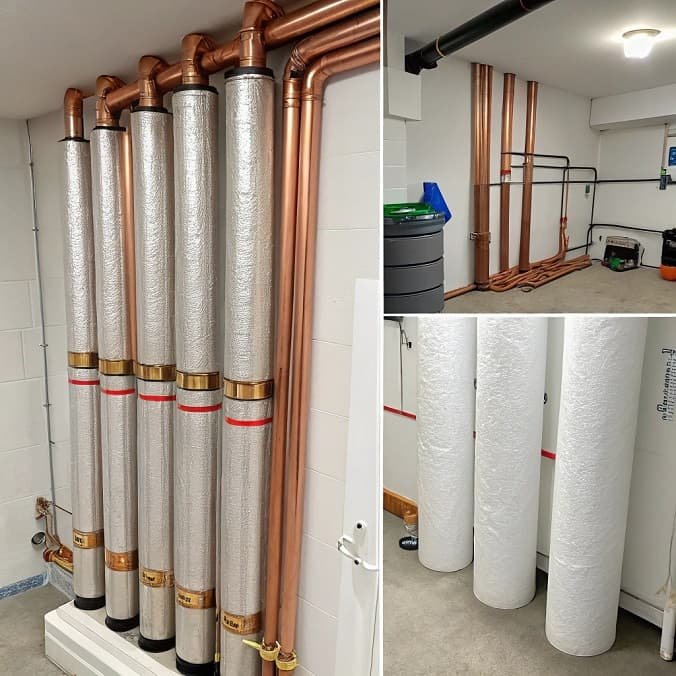
Типы изоляционных материалов
Несколько материалов подходят для изоляции медных труб, каждый с различными свойствами:
- Стекловолокно: Сделано из тканых стеклянных пряди, он предлагает отличное тепловое сопротивление и является огнестойким, Сделать его идеальным для систем горячей воды. Он доступен в трубках и обертках, Хотя обработка может вызвать раздражение из -за стеклянных волокон. Стоимость варьируется от $0.30 к $1.50 за линейную ногу (Плюсы и минусы вершины 5 Лучшие варианты изоляции домашней трубы).
- Мыло (Полиэтилен, Резина): Гибкий и простой в установке, Изоляция пены подходит для бюджета, С затратами от $0.20 к $1.35 за линейную ногу. Полиэтиленовая пена является устойчивой к влажности, в то время как резиновая пена устойчива к плесени и подходит как для горячих, так и для холодных труб. Однако, пена может быть менее эффективной для чрезвычайно горячих труб.
- Изоляция закрытых клеток: Обеспечивает превосходные тепловые характеристики и сопротивление водяному пару, часто используется в высокоэффективных приложениях. Он гибкий и простой в установке, Похоже на пену.
- Другие материалы: Минеральная шерсть и аэрогель встречаются реже, но могут использоваться для конкретного высокотемпературного или промышленного применения, Предлагая дополнительные варианты на основе потребности.
Выбор правильного материала зависит от цели трубы (горячая или холодная вода), расположение (в помещении, открытый, Безусловные пространства), и бюджетные ограничения. Например, Стекловолокно предпочтительнее для труб горячей воды в высокотемпературных средах, В то время как пена часто выбирается для проектов DIY из -за стоимости и простоты использования.
Преимущества изоляции медных труб
Преимущества многогранны, Влияние как эффективности работы, так и долгосрочных затрат:
- Энергоэффективность: Изоляция уменьшает потерю тепла, что особенно важно для труб горячей воды. Исследования, например, от Umass Amherst (Теплица & Цветоводство: Изоляция трубы: Мера экономии энергии | Центр сельского хозяйства, Еда, и окружающая среда в UMass Amherst), оценить ежегодные сбережения до $3.72 за линейную ногу для трубы диаметром 2 дюйма, в зависимости от затрат на топливо и часа использования.
- Предотвращение замораживания: В холодном климате, Изоляция поддерживает температуру трубы выше нуля, предотвращение повреждения. Это имеет решающее значение для открытых труб в неизвестных районах, таких как подвалы или чердаки.
- Уменьшение конденсации: Сохраняя холодные трубы теплее, изоляция предотвращает поверхностную влажность, снижение рисков плесени и коррозии, Особенно во влажной среде.
- Расширение продолжительности жизни трубы: Изоляционные защиты труб от перепадов температуры и влаги, уменьшение износа, который может продлить срок службы медных труб, известных за долговечность.
- Экономия стоимости: Первоначальные инвестиции в изоляцию часто компенсируются снижением счетов за энергию. Например, Стоимость установки DIY $9.52 В материалах может сэкономить о $10 ежегодно, с годовым периодом окупаемости (Спросите Пабло: Действительно стоит ли изолировать мои трубы?).
Дополнительные преимущества включают снижение шума от расширения труб и сокращения, Соответствие строительным норм, и экологическая устойчивость из -за более низкого потребления энергии, Учитывая переработку меди.
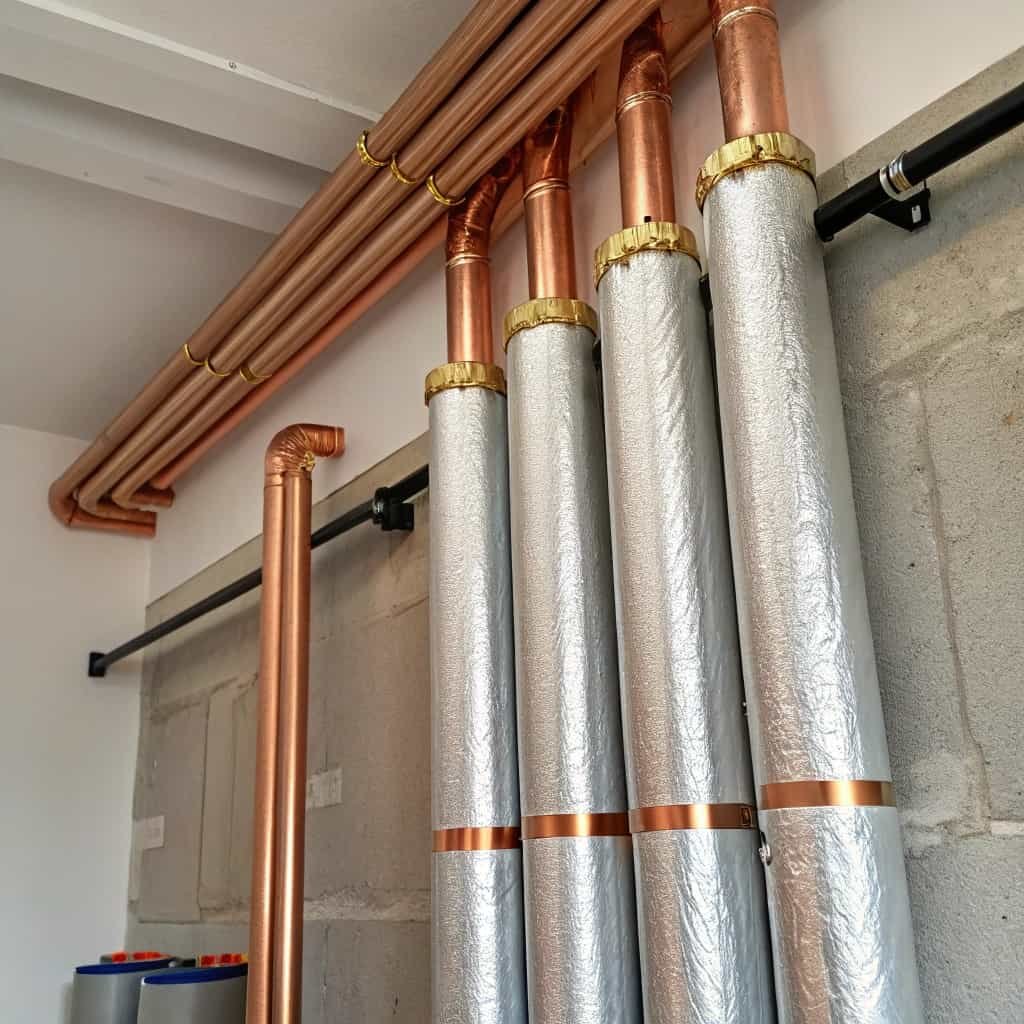
Как выбрать правильную изоляцию
Отбор зависит от нескольких факторов:
- Для труб горячей воды: Материалы с высокой термостойкостью, такие как пена из стекловолокна или закрытых клеток, рекомендуются минимизировать потерю тепла. Они идеально подходят для систем, работающих при высоких температурах, как 180 ° F., Как видно в применении нагрева.
- Для труб холодной воды: Пена или резиновая изоляция предпочтительнее, чтобы предотвратить конденсацию, Особенно во влажных или кондиционированных пространствах. Эти материалы предлагают хорошую устойчивость к влаге, Снижение риска плесени.
- Расположение соображения: Для наружных труб, Выберите устойчивые к погоде материалы, такие как резиновая пена, который может противостоять воздействию ультрафиолетового ультрафиолета и экстремальности температуры. Для безусловных мест, таких как чердак, более толстая изоляция (например, 1-дюйм толщины) рекомендуется для лучшей защиты от замораживания.
Климат играет роль: в холодных регионах, необходима более толстая изоляция, в более теплом климате, Основное внимание может быть сосредоточено на контроле конденсации. Местные строительные нормы могут также диктовать минимальные стандарты изоляции, особенно для энергоэффективности.
Руководство по установке
Правильная установка обеспечивает максимальную эффективность:
- Оценить и подготовить трубы: Убедитесь, что трубы чистые и сухие для предотвращения улавливания влаги под изоляцией. Удалить любой мусор или коррозию.
- Измерять и разрезать изоляцию: Используйте измерительную ленту, чтобы определить диаметр трубы и длину. Разрежьте изоляционный материал, чтобы соответствовать, Обеспечение прилегающего посадки. Для медных труб, Обратите внимание, что наружный диаметр (О.Д.) имеет решающее значение, Как видно в гидах, как Легкое руководство по размеру заказа для изоляции стекловолоконной трубы – Медный и железный трубопровод.
- Обертанная изоляция: Обернуть изоляцию вокруг трубы, обеспечение отсутствия пробелов. Для предварительных труб, Выровнять шва лицом вниз.
- Закрепить с клей или лентой: Используйте клейкую ленту, изоляционная лента, или клей для обеспечения изоляции, Применение каждой или две ноги для стабильности.
- Обрабатывать изгибы и суставы: Используйте гибкие секции или сделайте угловые порезы для изгибов, обеспечение непрерывного покрытия. Защитите суставы с дополнительной лентой, чтобы предотвратить потерю тепла.
Инструменты и необходимые материалы включают нож для утилиты, измерительная лента, изоляционная лента, и избранный изоляционный материал. Рекомендуется регулярное осмотр после установки.
Распространенные ошибки и как их избежать
Несколько ловушек могут снизить эффективность:
- Неправильное герметизация: Неспособность запечатать швы может позволить введение влаги, приводя к коррозии. Используйте паровую мембраны и обеспечивают плотные уплотнения.
- Неправильный выбор материала: Использование пены для чрезвычайно горячих труб может ухудшить материал, снижение эффективности. Всегда сопоставить материал с температурными рейтингами.
- Пренебрежение изгибами и суставами: Эти области могут быть точками тепла, если они не изолированы должным образом. Используйте специальные фитинги или нарежьте изоляцию, чтобы плотно подходить.
Избегание этих ошибок включает в себя тщательное планирование, Выбор правильного материала, и следующие рекомендации по установке, такие как из Как установить изоляцию медной трубы.
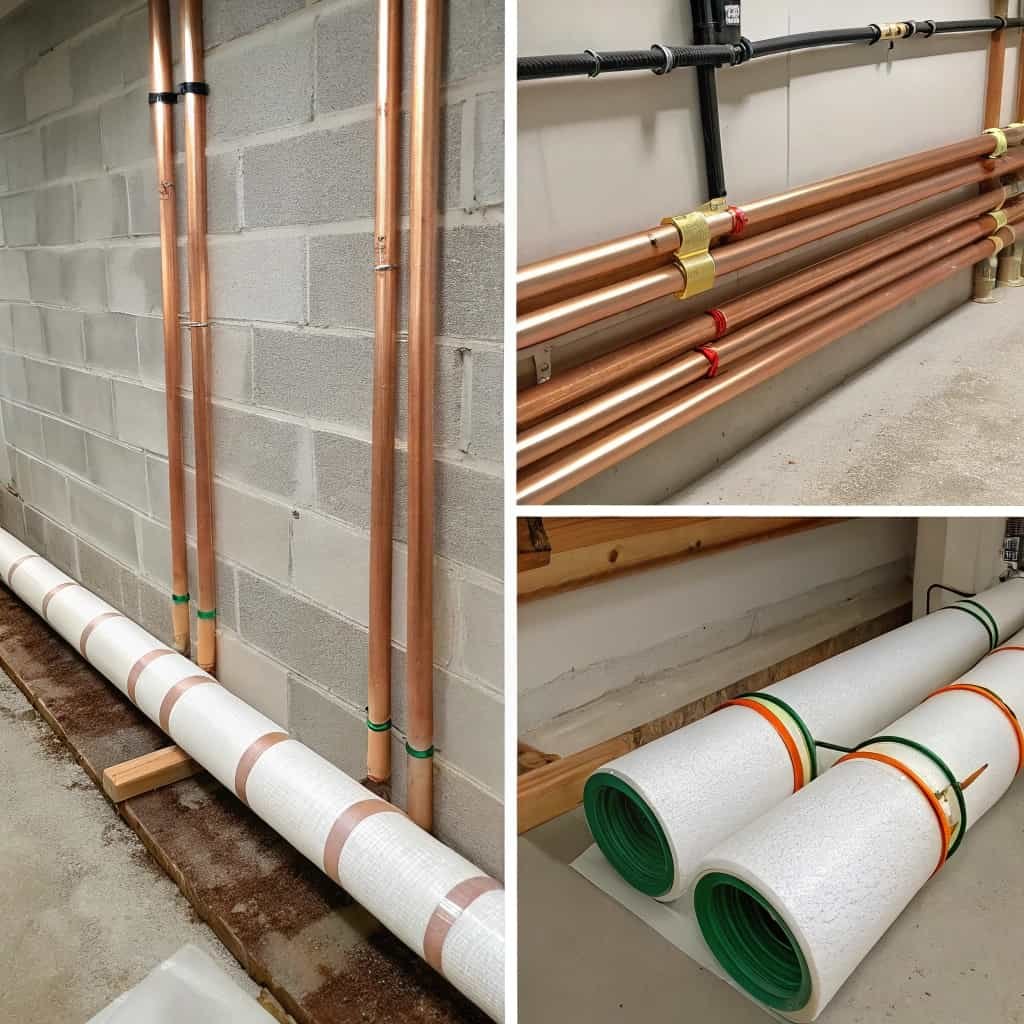
Обслуживание и устранение неполадок
Для обеспечения долгосрочной эффективности:
- Регулярный осмотр: Проверьте изоляцию на наличие растрескивания, влага, или носить, Особенно в открытых районах. Ежегодные чеки рекомендуются.
- Обрабатывать поврежденную изоляцию: Заменить поврежденные секции быстро для поддержания тепловых характеристик. Убедиться, что новая изоляция совместима с существующим материалом.
- Проблемы утечки или коррозии: Осмотрите на утечки, используя визуальные проверки, испытание давлением, или акустические методы. Адресовать коррозию путем регулировки рН воды, чистящие трубы, или нанесение защитных покрытий.
Устранение неполадок включает в себя раннее выявление проблем, такие как изоляция от факторов окружающей среды, и обращение к ним для предотвращения потери энергии или повреждения трубы.
Часто задаваемые вопросы и точные ответы
Основываясь на общих проблемах со стороны форумов и статей, Вот основные вопросы и их точные ответы:
| Вопрос | Точный ответ |
|---|---|
| Должен ли я изолировать свои медные трубы? | Да, Особенно для экономии энергии, Замораживание защиты, и сокращение конденсации, но оцените настройку. |
| Какой тип изоляции лучше всего подходит для медных труб? | Горячая вода: Стекловолокно или высокотемпературная пена; Холодная вода: Пена или резина для предотвращения конденсации. |
| Сколько это стоит? | Затраты варьируются от 0,20 до 1,50 долл. США за линейную ногу, С затратами на экономию DIY в течение года. |
| Каковы экономия энергии? | Экономия различается; например, до $ 3,72/линейная нога ежегодно для 2-дюймовых труб, В зависимости от затрат на топливо. |
| Как правильно установить изоляцию трубы? | Чистые трубы, измерять и разрезать изоляцию, обернуть плотно, Закрепить с помощью ленты, изгибы и суставы покрытия. |
| Влияет ли изоляция на производительность трубы? | Правильная изоляция повышает производительность за счет поддержания температуры; Плохая установка может задержать влагу, рискованная коррозия. |
| Есть ли риск повреждения с изоляцией? | Да, Если не установлено правильно, он может улавливать влагу, приводя к коррозии; Обеспечить правильную герметизацию. |
| Каков анализ затрат и выгод? | Начальная стоимость (например, $9.52 Для DIY) против. сбережения ($8- 12 долларов в год), Часто с годовой окупаемой. |
Эти ответы решают основные проблемы, Предоставление точных рекомендаций для пользователей.
Дополнительные соображения
В то время как изоляция в целом полезна, Есть сценарии, где это может не стоить:
- В хорошо изолированных пространствах: Если трубы уже в теплом, изолированная область, Потеря тепла может быть минимальной, Сделать изоляцию менее экономически эффективной.
- Короткие трубы пробегают: На очень короткие расстояния, Сэкономленная энергия может не оправдать стоимость.
- Потенциальные недостатки: В то время как изоляция в целом полезна, Некоторые дебаты существуют о том, может ли это увеличить потерю тепла в определенных сценариях из -за проводимости через изоляцию, Особенно, если не установлено правильно. Это подчеркивает важность правильного выбора материала и установки.
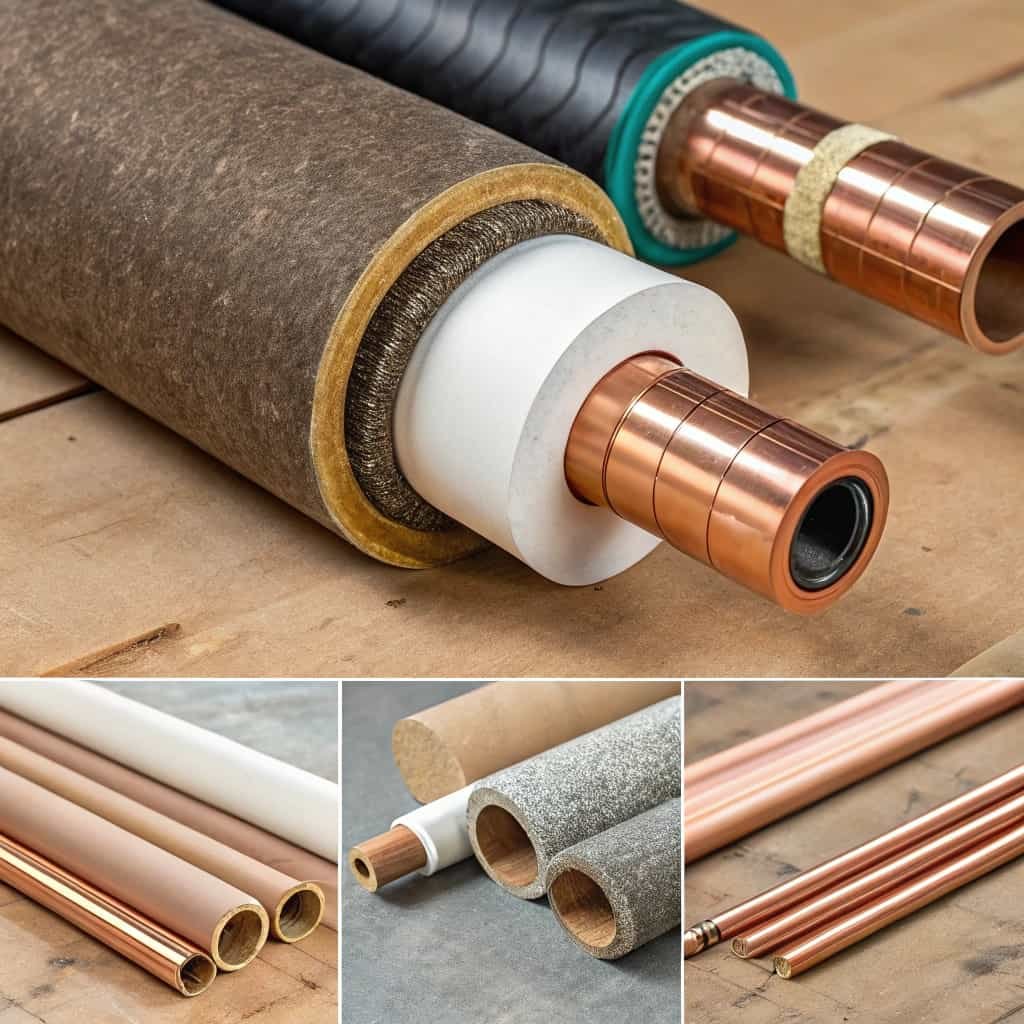
Заключение
Изоляция медной трубы является практическим и экономически эффективным решением для домовладельцев или предприятий, стремящихся повысить эффективность и долговечность своей сантехнической системы. Минимизируя потерю тепла, предотвращение замораживания, и уменьшение конденсации, это не только экономит энергию, но и снижает расходы. С различными вариантами изоляции и простыми этапами установки доступны, Это доступное обновление для энтузиастов DIY и всех, кто стремится повысить свою энергоэффективность. Инвестирование в изоляцию медной трубы - это умный выбор, который окупается как в комфорте, так и в сбережениях.
Любые комментарии?
Добро пожаловать оставьте сообщение или сделайте репост.



